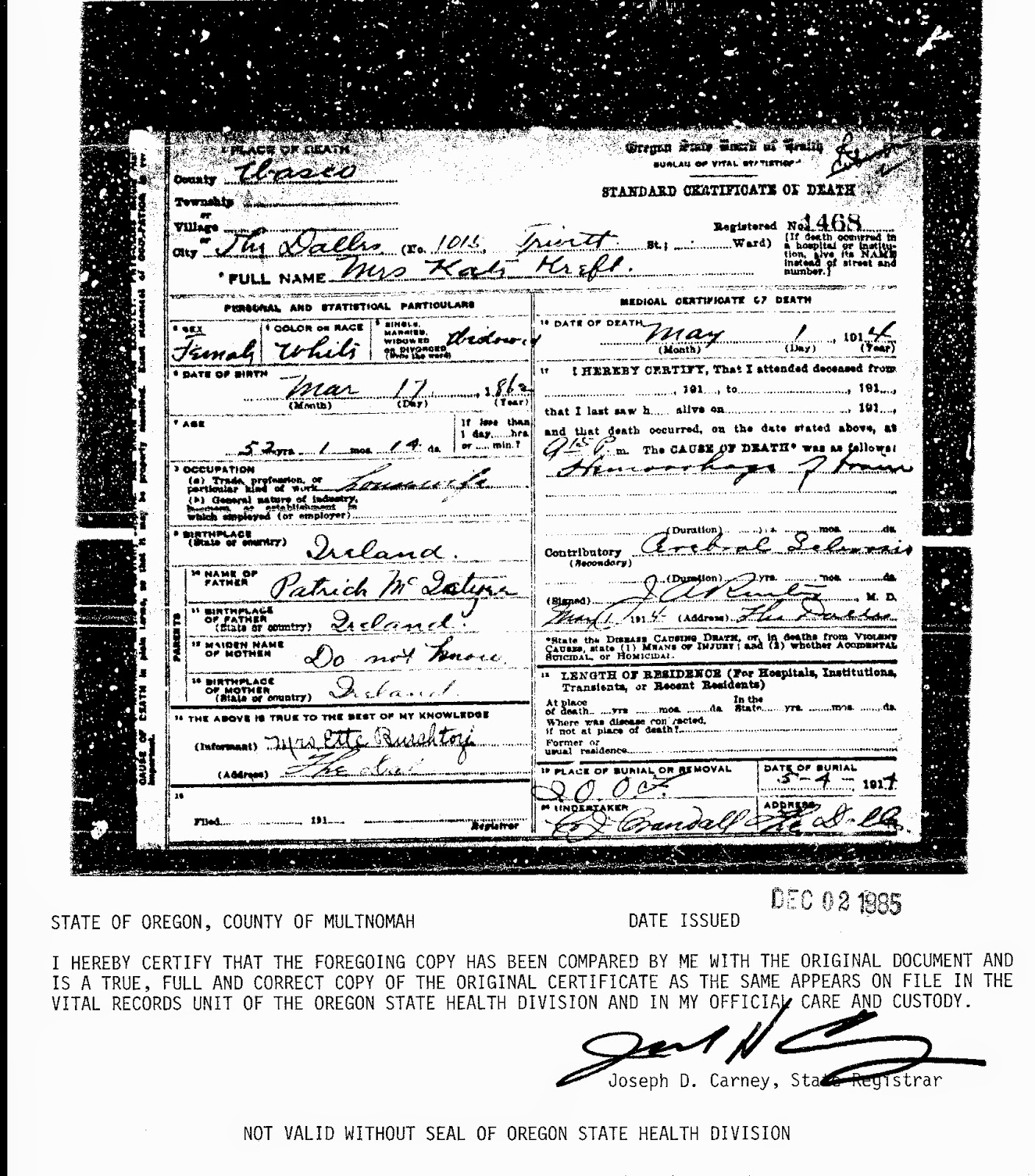- Patrick McEntire occupied 14 Irish acres and the land was taxed at 14 shillings
- James McIntire occupied 1 Irish acre, 2 perches and the land was taxed at 1 shilling, 6 pence
- John McEntire occupied 11 Irish acres, 3 rods and the land was taxed at 11 shillings
The survey was conducted by those who stood to gain from tithes, namely personnel of the Church of Ireland, usually members of the select vestry or apploters appointed by them 'to regulate and sub-divide'. The applotment enumerated each landholder in a parish, with details such as name of townland, size of holding, land-quality and types of crops. The amount of tithe payable by each landholder was based on all of these factors and calculated by a formula using the average price of wheat and oats from 1816-23. Most parishes had at least one tithe survey during from 1820-38 while some had two. Some parts of the country were exempt from paying tithe, among them glebe lands (land occupied by established clergymen), granges (land which in pre-Reformation times had belonged to a monastery) and all towns.
All this was eminently logical and scientific except for one rather serious snag; the tithe was to be paid by everyone, not just members of the Church of Ireland. Therefore, it was deeply unpopular with Catholics and Presbyterians who had their own clergy and who resented having to support a rival denomination whose members enjoyed more social and economic privileges than they. Furthermore, Catholics and Presbyterians between them outnumbered the established church, the latter being the preserve of those with social and political power. Not surprisingly there were instances of violent resistance, and numerous outbreaks of agrarian unrest in the 1830s were dubbed the 'tithe war'.
Tithes were payable directly to the Protestant minister, but collection was often difficult as people held out against the indignity and the financial burden. It should be remembered that all landholders had to pay tithe, and the majority of these were impoverished tenants already faced with heavy rents payable to their landlord. From 1838 on, the tithe was amalgamated with the land-rent and collected by landlords, who then passed on the church's share. This had the double effect of removing the trouble of collection from ministers and also of making payment more likely, given that non-payment of dues to the landlord could lead to eviction. Resentment against tithes festered as one of the ills associated with Ireland's ramshackle landlord system until the disestablishment of the Church of Ireland in 1869. Thereafter this denomination had to raise its own finance in the manner of other churches.
In total the Tithe Applotment Books comprise some 2,000 hand-written volumes of varying degrees of legibility. Even allowing for the exemption of town-dwellers and landless labourers from the survey, it still constitutes the nearest to a census of pre-Famine Ireland that we have - especially in light of the absence of formal census data from this period. As mentioned above, however, it is not comprehensive and some parts of the country were not surveyed. It should not be assumed that these 'exceptions' from the tithe survey were due to parishes being overlooked since there are usually explanations as to why they were tithe-free. In some cases there are no tithe books because a certain parish did not exist, or was part of another parish, at the time of the survey. There were also some parishes outside parochial jurisdiction, such as the above-mentioned granges, while glebe lands and all towns were also exempt. Details of exceptions are provided below. (1)
Source: The Tithe Applotment Books of Ireland, 1823-1838: www.genealogy.com accessed August 29, 2014.
Note: I have copied this blog to the www.mcintyreginty.blogspot.com site as either Patrick, James or John should be Michael McIntyre's father as well.






.jpg)













.jpg)
.jpg)
.jpg)
.jpg)


